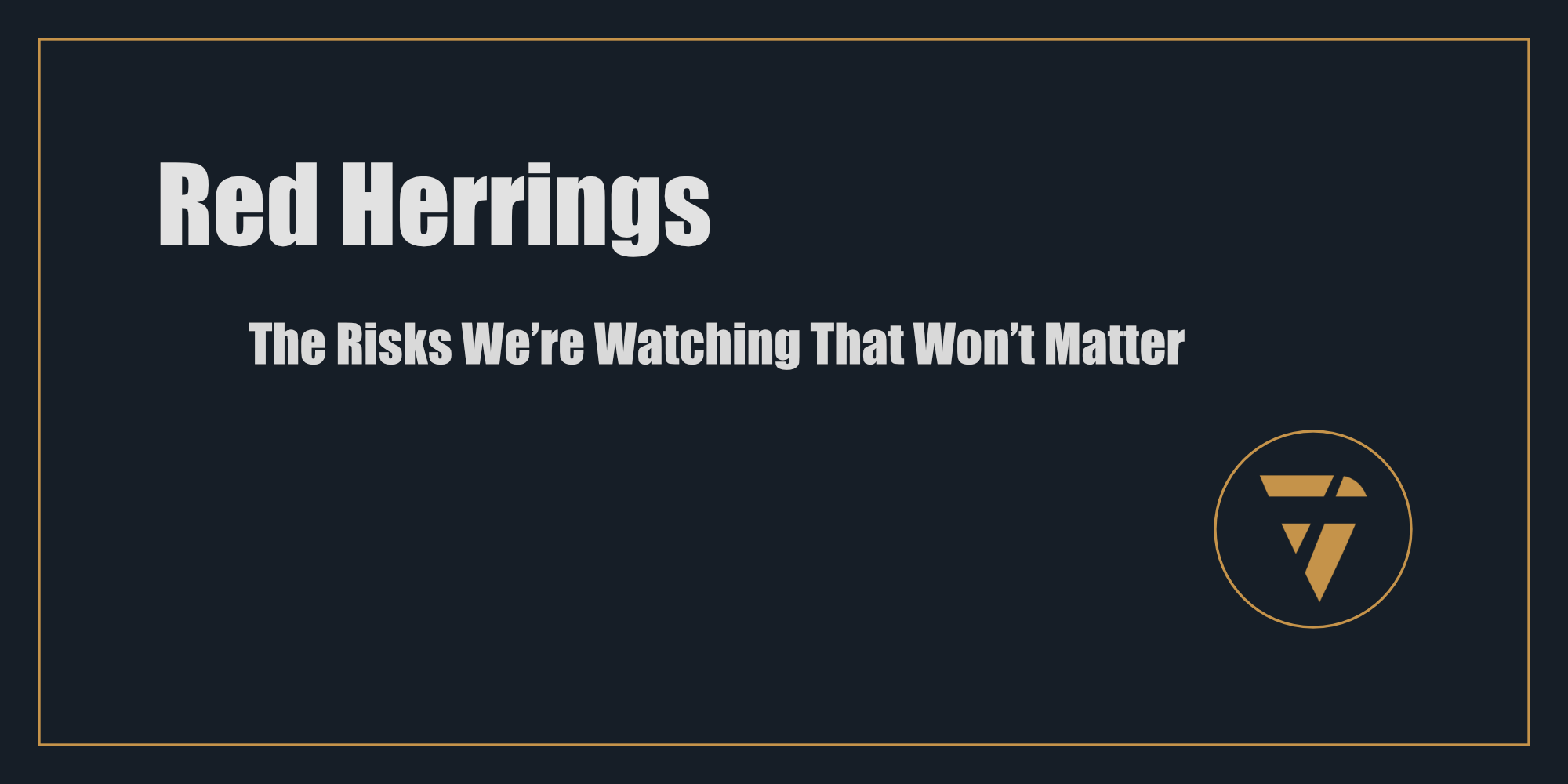Red Herrings
The Risks We’re Watching That Won’t Matter

Not all threats are created equal. Red Herrings are the risks that grab headlines, spark debates, and dominate agendas—but distract us from the real challenges reshaping the world.
The Allure of the Red Herring
In Top Risks 2025, Red Herrings symbolize our collective tendency to fixate on risks that, while sensational, have limited long-term impact. They serve as distractions, pulling attention and resources away from systemic threats that truly demand our focus.
These risks aren’t fabricated; they’re real, but their scale, scope, or implications are often exaggerated. In a world where attention is a finite resource, chasing these "shiny objects" leaves us underprepared for deeper, slower-burning crises.
What Makes a Risk a Red Herring?
Red Herrings capture attention because they are:
- Visibly Disruptive:
Events like regional conflicts, market dips, or high-profile corporate failures dominate news cycles due to their immediate impact, even when their broader consequences are limited. - Politically Convenient:
Leaders and institutions often amplify these risks to distract from more complex or inconvenient issues, using them as scapegoats or tools for short-term gain. - Emotionally Charged:
Risks tied to identity, fear, or cultural divides provoke strong reactions, ensuring their prominence even when their objective significance is limited.
These traits make Red Herrings powerful narrative tools but poor guides for decision-making.
Examples of Red Herrings
- Localized Conflicts with Limited Global Impact:
While tragic and destabilizing regionally, many conflicts are framed as global crises when their broader implications are minimal compared to systemic threats like climate change or AI governance failures. - Short-Term Market Volatility:
A stock market dip or currency fluctuation often sparks panic but rarely signifies long-term economic collapse. Focusing on these blips can obscure deeper financial vulnerabilities. - Polarizing Social Debates:
Cultural flashpoints dominate headlines and policy discussions but often fail to address underlying structural issues like inequality or governance deficits. - Isolated Corporate Failures:
The collapse of a high-profile company is headline gold, but it rarely destabilizes industries or economies on the scale that systemic financial risks do.
These distractions are not harmless—they shape public perception and policymaking in ways that delay or derail action on more pressing challenges.
The Opportunity Cost of Distraction
The danger of Red Herrings isn’t that they are false—it’s that they misallocate attention and resources. Every moment spent on an exaggerated risk is a moment not spent addressing existential challenges like:
- Climate adaptation and mitigation.
- Building resilient and ethical AI systems.
- Strengthening fragile global supply chains.
- Addressing systemic inequality and governance failures.
Red Herrings are expensive. They drain focus, dollars, and political will from the battles that truly define our future.
Staying Focused in a World of Distractions
- Assess Risks Critically:
Evaluate the scale, scope, and systemic impact of risks before allocating resources. Ask: Does this risk reshape long-term trends, or is it a short-term anomaly? - Focus on Fundamentals:
Prioritize addressing root causes over reacting to symptoms. For example, focus on energy transitions and infrastructure over short-term fuel price spikes. - Push for Better Governance:
Advocate for policies and institutions that focus on systemic challenges, resisting the pull of sensationalism. - Educate Stakeholders:
Ensure your teams, clients, and partners understand the difference between headline risks and strategic risks. Informed decision-making starts with clarity. - Balance Agility with Vision:
While responding to immediate events is necessary, don’t lose sight of long-term goals. Build flexibility into strategies to adapt without distraction.
The Cost of Chasing Shadows
The world is full of risks that demand our attention. Red Herrings distract us from the ones that matter most. By critically assessing threats and staying focused on systemic challenges, we can reclaim the clarity needed to navigate an increasingly complex future.
What distractions are pulling you away from addressing your most pressing challenges? Explore strategies to cut through the noise and focus on what truly matters.
This Substack is reader-supported. To receive new posts and support my work, consider becoming a free or paid subscriber.
This is what I’m working on. Tell me what you think, I enjoy the conversation! Subscribe and follow the work in real time.
Thanks!
B
Red Herrings steal focus, loud, urgent risks that distract from systemic threats. Stop chasing headlines. Assess critically, focus on fundamentals, and stay clear on long-term goals. Clarity beats chaos every time.
PS -





